Build
More than just about anything else I can think of that just does MIDI, the 4TrackTrigger feels like a professional piece of DJ gear. It’s exceptionally well built, and has a sturdy feel throughout without anything really screaming ‘cost saving component choice’. High quality encoders are used throughout, the rotary pots are smooth and slick, and the 7-bar LED displays scattered around the controller give the kind of visual feedback on control values, loop lengths, and so on that we’re used to from dedicated hardware.
The buttons are probably the best buttons I’ve ever used on a piece of DJ gear. Arcade buttons, the current popular choice for the button pressing connoisseur, feel hacky, space inefficient, and dare I say toy-like (who’d have thought?) in comparison. The colossal price of the 4TrackTrigger left me sufficiently deterred from opening up the unit to poke around, but the buttons feel like ball and spring switches akin to arcade buttons but with a 2-3mm action that’s either up or down, so there’s no ‘squidgy’ feel – just immediate, gratifying tactile feedback. Awesome.
To confound that though, I do have a bit of an issue with the small, circular, secondary buttons. In comparison to the main square ones they’re too finicky and don’t have the same level of tactile feedback. Their use around the FX sections of the mixer is a shame because it seems to me that FX activation is a musical endeavour, thus more suited to the square buttons, and there’s room (on the surface, at least; perhaps under the cover things are just too tight to fit them in) for the square ones. They’re not a big problem in the loop and master areas, as they stay out of the way and have the right amount of space for usage frequency, but in the track areas they definitely feel cramped, and that’s without even going into the shift functions assigned to them.
One thing though: if I were to pay €1500 plus VAT and shipping (so €1850 – £1475 – to get it to the UK, then) for a piece of gear, no matter how well it was made I wouldn’t want to see Comic Sans within a hundred miles of it. The 4TrackTrigger’s logo is just hideous, sorry logo designer.
Ergonomics
Whilst the 4TrackTrigger really works as a ‘proper’ on-the-fly controller, it’s perhaps more important than ever to properly prepare your tracks with accurate grids, cue points, and so on, because the lack of jog wheels or touch strips that you’ll find yourself faced with means that if you load up a track that’s not got, for instance, the cue set up properly for the start of the track, you’ll find it difficult to seek to it in any way that could be called intuitive. This isn’t a problem, of course, because nowadays meticulous track preparation is analogous to the importance of arranging your crates so that you could find the record you want in an instant back in the days of yore.
I’ve seen a lot of comments from would-be users who say the 4TrackTrigger looks cramped, and to be completely honest I both agree and disagree at the same time. The controls are squashed together pretty tightly, but when you get away from the idea of ‘controllerism’ and think from the perspective of a DJ that actually plays two-hour plus sets of music being mixed together, the ergonomics of the 4TrackTrigger work like a charm. No, it’s not the perfect controller for busting short, crazy controllerism routines, but it’s fantastic for actually mixing with. Everything’s right where you need it, and in anything that could be called normal operation nothing feels like it’s dangerously close to a neighbouring button or control.
Whilst I did have a bit of a jab at the secondary buttons – especially in the track sections – in fairness, the things they control like manual loop and beat jump aren’t features that, er, feature prominently in the workflow of that many DJs, and the shift functions control things like cue type and grid locking, things that in an ideal world are set and forget functions done before the mixing begins… so maybe I’m being a little bit harsh here.
More than any controller I’ve used in recent memory, the 4TrackTrigger allayed any controller related stress that I find almost inevitable when coming away from dedicated hardware. I set it up next to a mixer and was confident that everything I needed was provided for between the two devices and I could just get on with getting on. It’s difficult to explain, really, because that’s a comment that should really apply to any well designed controller, but I think it’s something to do with the fact that the 4TrackTrigger is a track and effects controller that leaves mixing to mixers, and in the process does away with any weird layouts, cramped design or any other issue. I think the fact that the 4TrackTrigger is so well built and really feels at home next to a mixer as a piece of pro gear helps as well.
I was also sent a foot pedal to test the 4TrackTrigger with. Sure enough, the looping aspect of the 4TrackTrigger works very well, and there are two separate 1/4” pedal inputs to use. Having foot control can make a big difference for things like live looping, but it’s funny how as a concept it’s not really taken off, even in the light of four deck mixing and live recording which is really a marketing ploy for the vast majority of us that never mind don’t have the skills, don’t have four hands either.
The only real issue I have is that as the 4TrackTrigger is so obviously designed to sit with a hardware mixer, having it at only around two inches tall is a nuisance. Now, in their promotional images Glanzmann have the 4TrackTrigger mounted on a stand above a mixer, so the shallower form factor makes sense, but if I want it on a desk I need to use risers of some kind to get it flush.

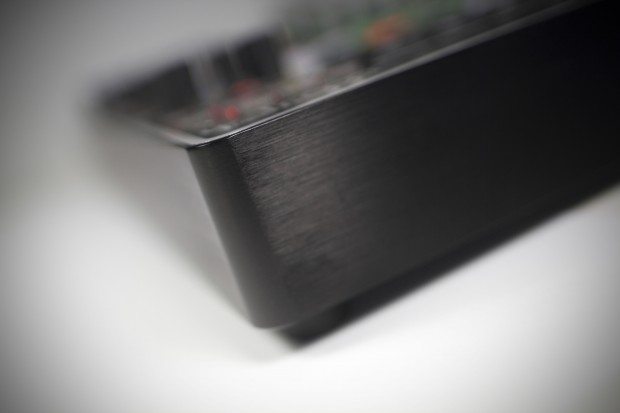
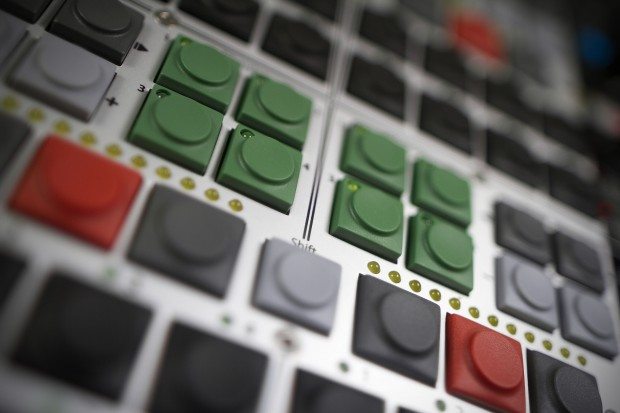
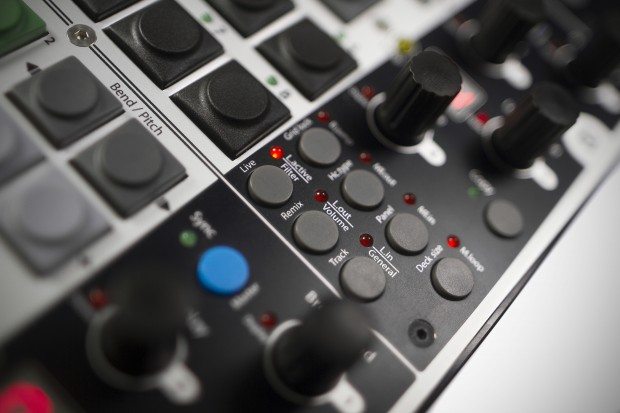
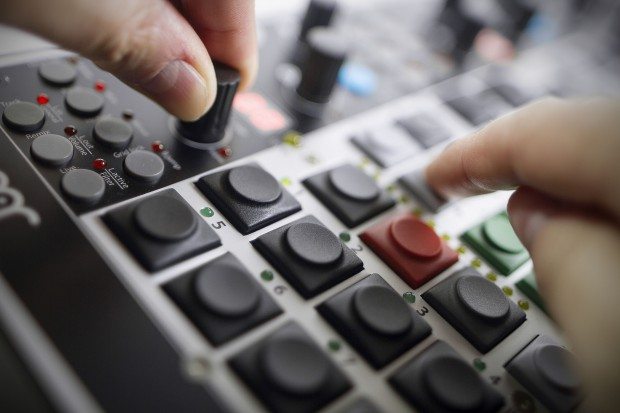
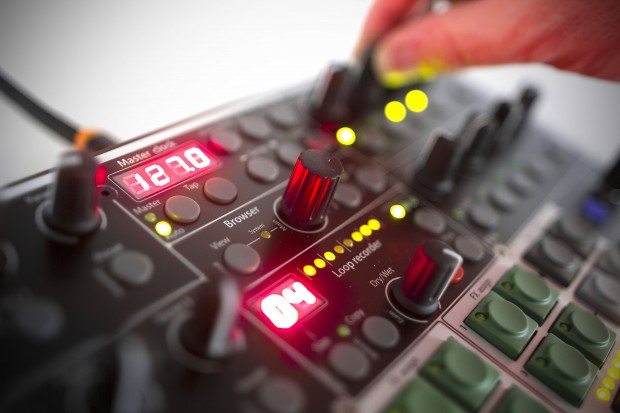
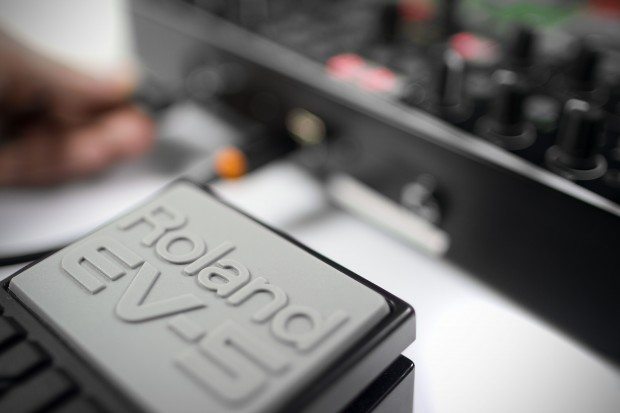
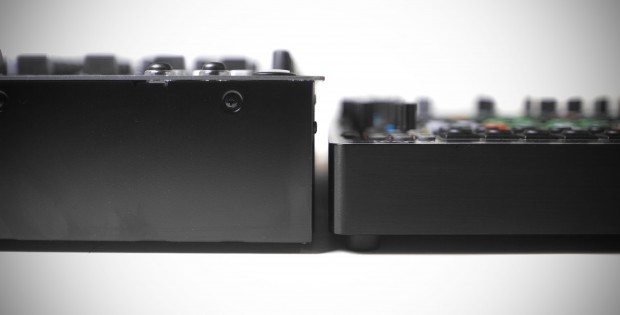
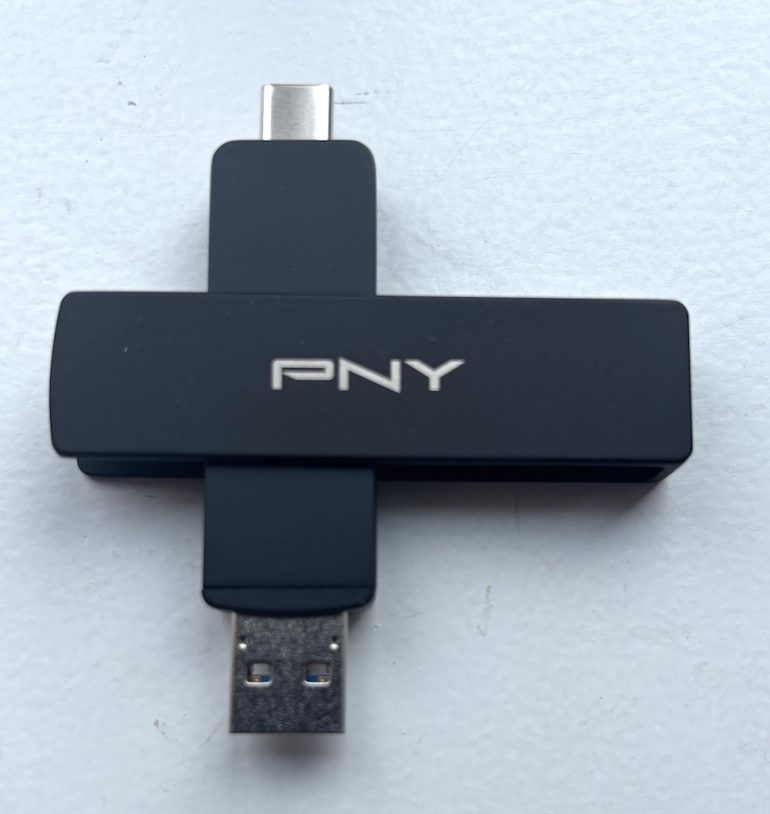


I like this but think having all those Deck A&B buttons above C&D might get a bit tiresome. I’d swap them over.
In fact with the new remix decks encouraging a different workflow this controller might be a bit too late. If Glanzmann carry on providing a button for every control, their Remix Deck version is gonna be huge in size.
Go modular guys, let us choose a set-up that suits us and can be upgraded without a huge financial outlay.
I really love the milled aluminum on the old device but I was not in favour of the rest of the concept.. Wait the Innofaders (?) were dope too even tho they felt wrong on this piece of hardware.
Can’t see a big difference here. The concepts seems to be to simply put every single feature into a piece of hardware.
High end gear is difficult. I wish Nakamichi would still exist taking their hit on it…
LOL….u remember the
Nakamichi Dragon?? $1000 for a cassette player!!
And loved every single bit of it. Actually Nakamichi still exists!!!!
This is such an epic controller, and I’m really happy to see the 7-bar LED readouts. I think that Pfister has it right, though. If they went modular with these it would make so much more sense. Have a deck one, a remix deck one, a mixer one, and be able to mix and match. Same build, same controls, etc., but giving users the ability to really dig into their workflow and style and build both up and down.
And it really should have some touch strips. They would just fit right at home here. But, obviously space and necessity…
Their controllers look like someone puked buttons and knobs all over. This to me falls in the category of tries to do everything while doing nothing extremely well. Usually when you see a new controller they just make sense. Looking at this I have no idea what would do what.
Some Chinese company need to start making something like this at a 1/4 of the price. I wouldn’t mind buying a plastic one with a build quality similar to Native instruments gear (which really isn’t that great).
It looks more like something out the cockpit of the space shuttle than a DJ controller.